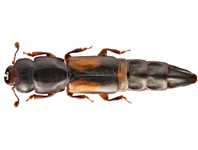Abstract
The name Athaumasta was introduced by Hampson (1906) as replacement for Thaumasta Staudinger, 1871 (nec. Gistl). Athaumasta is a small Bryophilinae genus found in southern Siberia, Mongolia, Kazakhstan, Russian Far East, Korea and China. By the male genitalia structure Athaumasta is very close to Victrix Staudinger and Bryophila Treitschke, but characteristic forewing pattern, strong pectinate of male antennae, narrow and dorso-lateral flattened uncus, and distally narrowed and apically pointed valvae are characteristic for the genus. The genus includes six described species, one of which has recently been described (Volynkin 2012), and many species are still undescribed. The species cortex Alphéraky, 1887 was incorrectly included to Athaumasta by Poole (1989), and transferred to the genus Parvispinia Babics, Kononenko & Saldaitis by Babics et al. (2012). The species miltina Püngeler, 1902 distributed in the Tien Shan mountain massif (Püngeler 1902; Lehmann & Bergmann 2005) has appearance very close to Athaumasta, but male antennae much less pectinate (Fig. 12). It was treated by Poole (1989) and Lehmann & Bergmann (2005) as a member of the genus Oederemia Hampson (= Victrix), but was not mentioned by Fibiger et al. (2009) in the checklist of Palaearctic taxa of the genus. The male genitalia of miltina (Fig. 22) differ from those of all other Athaumasta by the broad uncus, apically broadened and rounded valvae, and presence of a torn in cornutus in vesica, whereas in Athaumasta uncus is narrow, valvae are apically narrowed and pointed, cornutus is plate-like or absent. By the male genitalia structure, miltina resembles the genus Victrix, subgenus Rasihia Koҫak, but have broader uncus and strongly different appearance. Thus, the genus position of miltina is unclear. Here we treated miltina as a member of Athaumasta (sensu lato), but its genus position will be revised later in a further revision of Eurasiatic Bryophilinae.
References
Alphéraky, S. (1887) Diagnosen einiger neuer centralasiatischer Lepidopterten. Stettiner entomologische Zeitung, 48, 161–171.
Babics, J., Kononenko, V.S. & Saldaitis, A. (2012) New genus and three new species of the subfamily Xyleninae (Lepidoptera, Noctuidae). Zootaxa, 3509 (1), 55–68.
https://doi.org/10.11646/zootaxa.3509.1.3
Bang-Haas, O. (1928) Horae Macrolepidopterologiae regionis palaearcticae, 1. Kupke und Dietze, Dresden, 128 pp.
Christoph, H. (1893) Lepidoptera nova Faunae Palaearcticae. Deutsche entomologische Zeitschrift Iris, 6, 86–96.
Hampson, G.F. (1906) Catalogue of the Lepidoptera Phalaenae in the British Museum, 6. London, Taylor and Francis, 536 pp.
Kononenko, V.S., Ahn, S.-B. & Ronkay, L. (1998) Illustrated catalogue of Noctuidae in Korea (Lepidoptera). In: Park, K.T. (Ed.), Insects of Korea, 3, pp. 1–509.
Lederer, J. (1855) Weiterer Beitrag zur Schmetterlinge-Fauna des Altai Gebirges in Sibirien. Verhandlungen des zoologisch-botanischen Vereins in Wien, 2, 97–121.
Poole, R.W. (1989) Noctuidae. Lepidopterorum Catalogues, New Series, Fascicle, 118 (pt 1– 3), 1314 pp. [E.J. Brill, Leiden]
Püngeler, R. (1902) Neue Macrolepidopteren aus Centralasien. Deutsche entomologische Zeitschrift. Gesellschaft Iris zu Dresden, 15, 147–160.
Staudinger, O. (1896) Ueber Lepidopteren von Uliassutai. Deutsche entomologische Zeitschrift Iris, 9, 240–283.
Staudinger, O. & Wocke, M. (1871) Catalog der Lepidopteren des europaeischen Faunengebiets. Dresden, 426 pp.
Volynkin, A.V. (2012) Noctuidae of the Russian Altai (Lepidoptera). Proceedings of the Tigirek State Natural Reserve, 5 (Barnaul), 339 pp.

